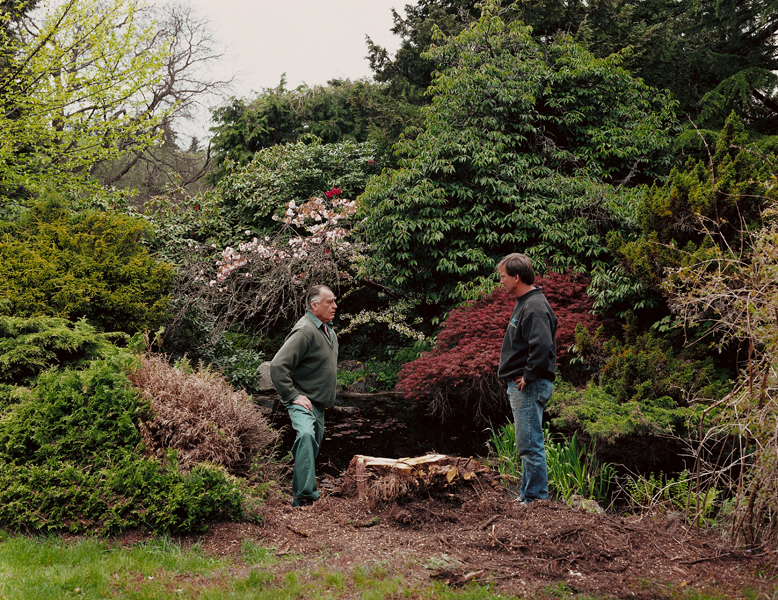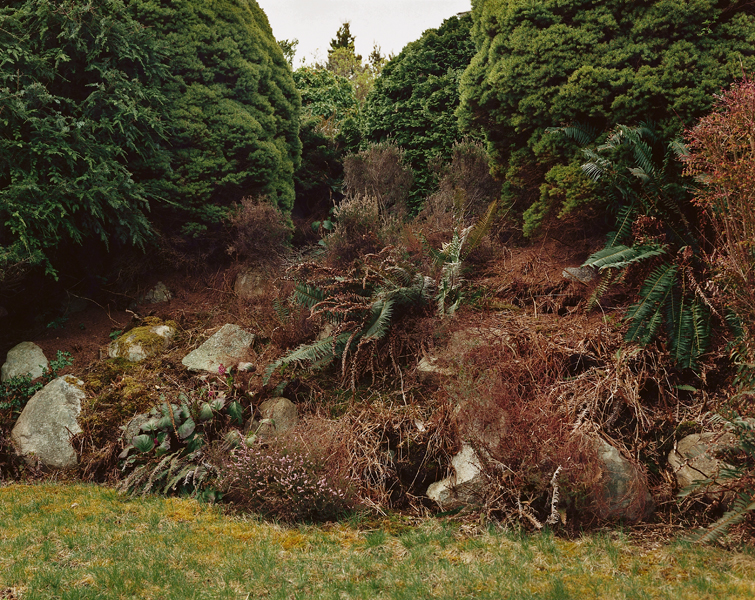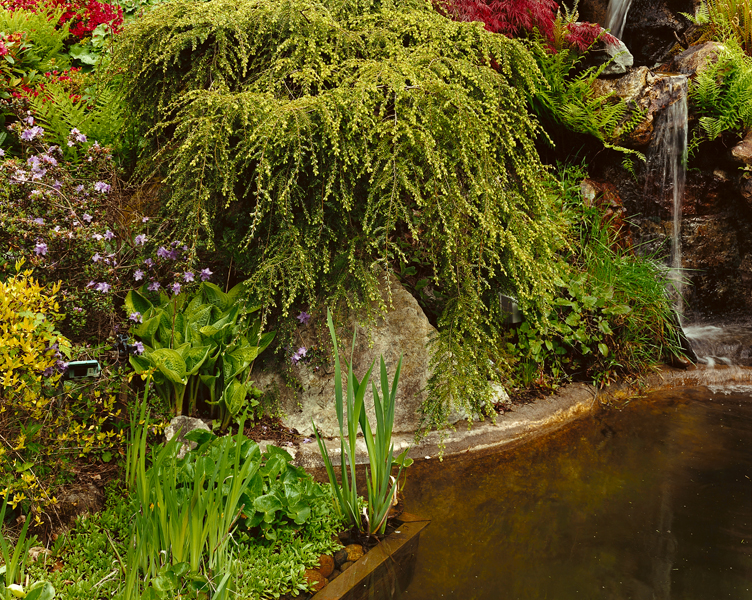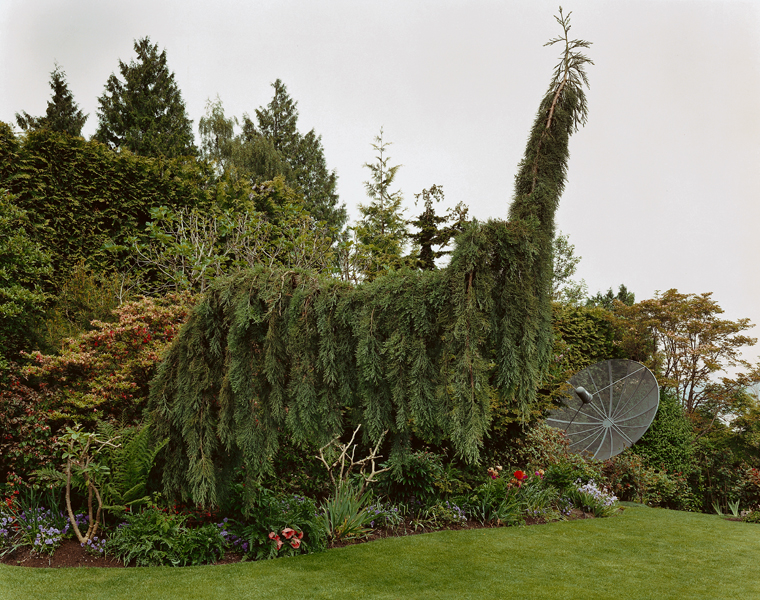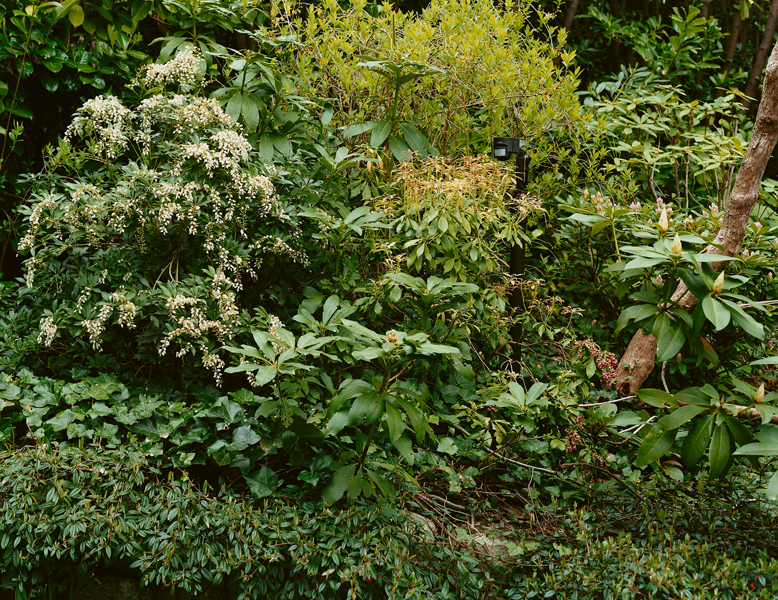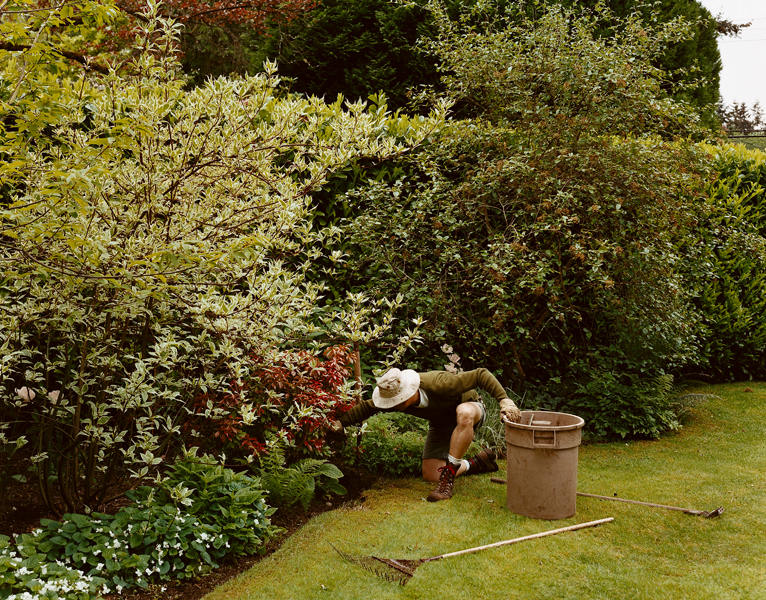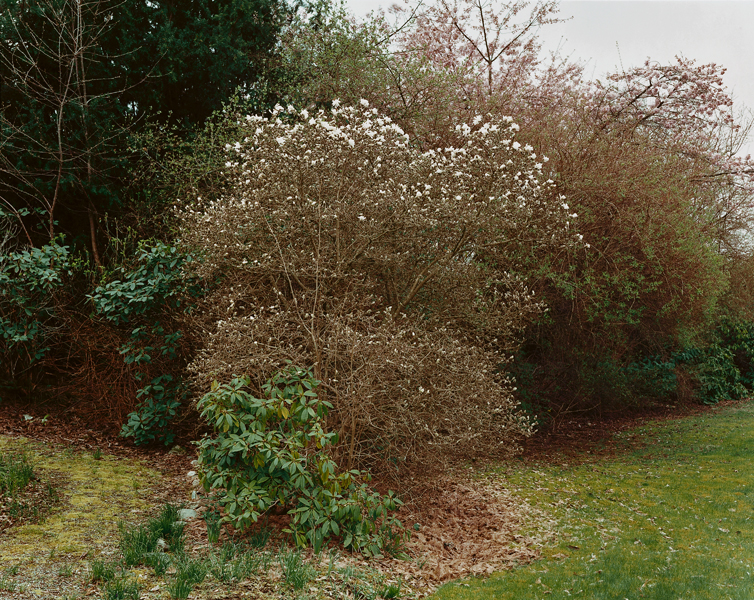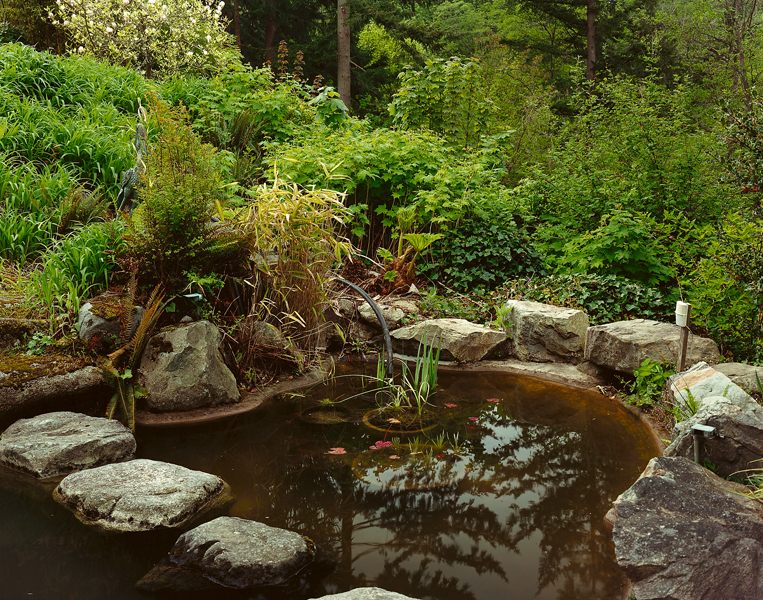[Spring 2001]
by Christopher Brayshaw
The gardens depicted in Scott McFarland’s recent photographs lie in a narrow wedge of land on Vancouver’s West Side, bracketed on one side by the University of British Columbia’s classrooms and satellite colleges, and, on the other, by the urban forest of the University Endowment Lands,
A wild park crisscrossed by winding trails, whose forested ravines are choked with thickets of blackberry, salmonberry, and salal. Not much of this landscape is visible in McFarland’s pictures – the native plants present in the gardens are always arranged and tended by humans – but it helps to keep this invisible forest in the back of your mind as you study the photographs, if only to recognize that the only thing suppressing its presence in the pictures is the ongoing labour of the gardens’ owners and their workers, an activity that is largely invisible. It’s no stretch to suggest that this work is, in a sense, like that of a photographer, always choosing what to crop or excise, what to suppress or bring into visibility.
None of this activity is apparent from the street. Gardening, as practised by the workers who labour at the addresses along Drummond Drive and Acadia Road, is a private, introspective art. The casual visitor sees only the gently curving streets, lined on either side by high green hedges whose sharp contours are furred with fresh spring growth. Gated private driveways wind off among tall stands of cedar and Douglas fir. Gardening contractors’ trucks can occasionally be seen on the street. But the main evidence of the work depicted in McFarland’s photographs is the waspish buzz of power rakes, lawnmowers, and hedge trimmers that echoes in the air, a harsh mechanical undercurrent below birdsong, the lazy buzz of bees in the flowers beside the road, and the footsteps of a private security guard conspicuously loitering across the street. The neighbourhood streets are public spaces, but the walking visitor is struck by a powerful sense of unheimlich, of not-being-at-home, in this largely private world.
McFarland’s photographs elide this psychic estrangement, blurring the class boundaries that keep the visitor out from behind the high hedges and locked gates. The photographs take us inside. In this way, they make the private gardens built and maintained for their owners’ pleasure the subject of public contemplation and discussion. Though their compositional vocabulary suggests specific historical parallels – with Corot’s landscape studies; with Courbet’s Stonebreakers; above all, with mid-career Monet – the actual places depicted are new, and their incorporation into the visual record is, in its way, as startling as Lartigue’s stop-motion experiments or Blossfeldt’s botanical studies. Something is seen for the first time, and older genre forms such as the landscape and the portrait are “refunctioned” to admit the new information. Though the technical specifications of McFarland’s project – bulky medium-format gear and long exposure durations – required the consent of the workers and landowners whom the photographs depict, this consent was in no way assured. McFarland’s earliest garden images depicted unoccupied properties up for sale or owned by offshore landlords, shot from the street or from ungated driveways, a covert process whose willfulness and conceptual independence underlies the consensual, almost collaborative aesthetic characterizing the images in the garden series. This spontaneous, improvisational process must be seen in relation to the picture-types employed in creation of the series. The portrait photographs’ “improvised encounters,” whose subjects’ poses are suggested by behaviours that the photographer has previously observed, stage a collision between historical pictorial forms, marked by the record of their previous engagements with the world, and the spontaneous, organic emergence of micro-gestures and “found compositions” that McFarland can anticipate but never control. In this respect, the artist’s choice of picture type (whether portrait, landscape study, or still life) is as deliberate as his choice of focal depth or exposure duration.
For example, McFarland’s photograph Mr. Bell on His Property depicts two men conferring over a fresh stump. The title indicates that one man is a property owner, the other a worker, but the visual evidence that the picture offers is not enough to permit any kind of definitive identification. We are drawn to speculate on the details distinguishing each man from the other. Only the property owner is named; the other man is silent, as much “property” as the blossoming trees that mount above both men’s heads, billowing up into the warm grey summer sky. The title suggests a social distinction between the men that is refuted by the visual evidence. Both men have equal visual presence; each could equally plausibly be Mr. Bell, and the picture’s strength comes from imagining, in turn, that each is Mr. Bell, and observing the difference between one identification and the other.
Though McFarland’s portrait studies are compelling, for me, the real strength of the series lies in its remarkable still photographs of garden plants. The gardens are not native gardens; the plants they contain arrived on the west coast at different points in time. The plants are rendered into simultaneous visibility by each moment of exposure, but each plant represents a different historical moment. In this way, the photographs present the illusion of a moment of seamless time, implying that each depicted form has always been continuous with the other, much as we perceive the night sky as a seamless, simultaneous image, when in fact it is composed of bits of light arriving at different moments, gathered up and arrested as a pattern. The gardens are like models of a hybrid culture composed of native species and recent arrivals. This “submerged aspect” of the pictures is not necessarily apparent at first glance, but emerges over time. The plant studies can consequently be seen as an analysis of democratic culture, posing questions such as, Who commissioned the gardens’ form? and Who supervises their management?
A similar set of questions arises from the observation that the gardens are, in the end, private properties that, by definition, are watched over and regulated. Recent photographs titled Sick Optix Motion Sensor . . . depict motion detectors buried in thick foliage or concealed beside an ornamental waterfall. These devices configure events, capturing motion as a pattern. Their work is much like that of a photographer’s camera, which abstracts from an open field of detail. Their placement resembles the placement of McFarland’s camera, insofar as they are both positioned in places where “significant events” are likely to occur, without any foreknowledge of the specificity of each event.
In McFarland’s photographs, the “sick optics” and other technologies employed in the design and maintenance of the gardens are turned against themselves, not only as critiques, but also as elaborations of the gardens’ deep or inner structure. The motion detectors and video cameras are like a permanent record of photographic technology’s presence in the gardens. In this way, McFarland’s pictures are rendered conceptually congruent with their subjects, thereby elaborating aspects of the gardens’ history inaccessible to figurative representation alone.
Christopher Brayshaw is a Vancouver-based independent critic and curator.

